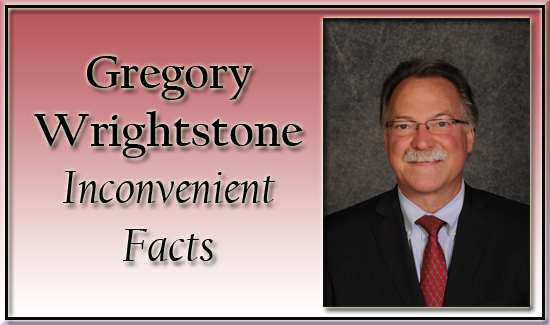Facts Rain on Wolf’s Climate Change Parade

When Gov. Tom Wolf of Pennsylvania uses the past year’s wet weather and local flooding to support his assertion that “we have a problem with climate change,” we can’t help but rain on his parade.
The Democrat governor’s comments came in reference to a petition to limit greenhouse gases that had been submitted to the Pennsylvania Environmental Quality Board by 61 parties, including environmental advocacy groups and solar energy firms.
Modeled after a California program, the proposal would require emitters of carbon dioxide to purchase permits for every ton of carbon released to make Pennsylvania carbon neutral by 2052.
As to whether he supports the proposal, the governor said:
“I haven’t come to a conclusion on that. But we have a problem with climate change. That is a fact. We’ve all seen that this past year. York County has had more rain. I’ve gone around the state: Bradford County, York County, Schuylkill County, Allegheny County, Philadelphia County — all over the state — localized flooding. I’ve never seen this in my lifetime. We are having real problems.”
Here the governor makes the common mistake of viewing weather outside its historical context and thinking there may be policy implications to consider.
According to the National Oceanic and Atmospheric Administration (NOAA), Pennsylvania’s annual precipitation for the first three years of his administration (no data available yet for 2018) was 42.9 inches, only 0.3 inch higher than the average long-term data dating to 1895 — an increase hardly worthy of a policy discussion.
If yearly precipitation has not increased significantly, perhaps there were bigger storms with greater duration that led the Governor to believe that drastic action is needed?
Again, NOAA data dispel that notion. Agency records show that the most consecutive days with an inch of rain or more peaked in the 1940s and 1950s for the more than 700 weather stations in the state. Of the past 120-plus years, the last 30 years had some of the fewest such records.
Perhaps Gov. Wolf was recalling that he personally viewed flooding of the Susquehanna River in Harrisburg last July when the it crested at 17.3 feet. Much was made of the flooding at the time, but it ranks just 31st on the list of greatest floods at Harrisburg — and only a bit more than half the record set by Tropical Storm Agnes in 1972.

Even if wet weather signified an important change in the climate, the response of mandating a carbon neutral Pennsylvania would present staggering costs. Current mandates requiring that a measly 18 percent of the state’s electricity come from alternative sources — such as solar and wind — by 2021 are estimated to increase electricity prices by $700 million and eliminate 11,400 jobs by 2025.
Utterly irrational is policy that would transition from low-cost, reliable energy provided by the huge oil and gas resources of the state’s Marcellus and Utica shale deposits as well as its coal reserves to embrace expensive, intermittent “green” energy. But such is par for much of the thinking in the Wolf administration.
A “Climate Change Action Plan Update” published a couple years ago by Wolf’s Department of Environmental Protection averred that its recommendations would reduce “energy use enough to actually lower total gross domestic product” while producing a net gain in employment. This betrays an ignorance of basic economics and a delusion about a bureaucracy’s ability to manage energy markets that are best left to producers and consumers to shape.
In Pennsylvania, along with the remainder of the world, the poor contribute a higher percentage of their income to energy costs than others, making expensive, green-energy policies a regressive form of taxation. Hence, at least in part, the recent riots in Paris where gasoline costs twice as much as it does in the U.S.
The hubris of politicians notwithstanding, the direction of the climate should be left to the same natural forces that have been driving it since the dawn of time. In the meantime, humans will be better positioned to adapt to either a colder or warmer climate if the ingenuity of free markets is allowed to continue to produce the “5,000-year leap” kind of prosperity experienced since the Industrial Revolution.








